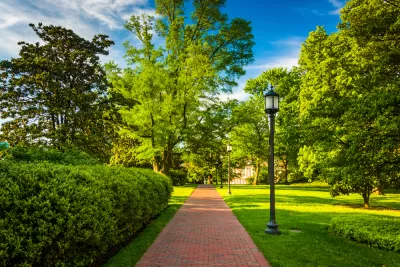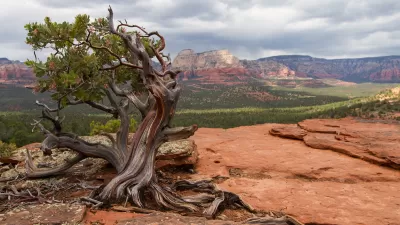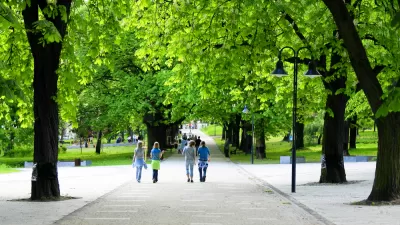A movement to plant small patches of plants in urban neighborhoods is taking off in Europe and Asia as cities work to mitigate the effects of climate change and provide increased access to green space.

The newest trend in urban forestry: micro-forests. The tiny, neighborhood-scale patches of native trees are proliferating in cities around the world, writes Elizabeth Hewitt in National Geographic. In the 1970s, Japanese botanist Akira Miyawaki "pioneered a method of planting young indigenous species close together to quickly regenerate forests on degraded land."
Now, "[i]n Europe, India, and other countries, communities are creating small-footprint, native forests as hyperlocal responses to large-scale environmental challenges." In the Netherlands, IVN Nature Education has led an effort to plant 144 "tiny forests" to date. "Public projects, which IVN coordinates with a local school, community members and a municipality, usually range between 200 and 250 square meters—roughly equivalent to a tennis court."
The project also encourages private backyard forests, which can be as small as six square meters. "Daan Bleichrodt, who launched IVN’s Tiny Forest initiative with the goal of making nature more accessible to children, said he thinks they are popular because people are becoming more aware of major environmental challenges." And while "tiny plots of trees alone will not solve climate change," "[p]reliminary carbon sequestration data shows that the Tiny Forest planting method is on par with other forms of reforestation in the Netherlands. Wageningen researchers found, on average, that each sequestered about 127.5 kilograms of carbon in 2020."
But while nature-based solutions "can’t substitute decarbonizing the economy," says Cécile Girardin, of Oxford University’s Nature-Based Solutions Initiative, but they can have positive impacts on things like urban cooling, water regulation, and biodiversity.
FULL STORY: Why ‘tiny forests’ are popping up in big cities

Planetizen Federal Action Tracker
A weekly monitor of how Trump’s orders and actions are impacting planners and planning in America.

Maui's Vacation Rental Debate Turns Ugly
Verbal attacks, misinformation campaigns and fistfights plague a high-stakes debate to convert thousands of vacation rentals into long-term housing.

San Francisco Suspends Traffic Calming Amidst Record Deaths
Citing “a challenging fiscal landscape,” the city will cease the program on the heels of 42 traffic deaths, including 24 pedestrians.

Amtrak Rolls Out New Orleans to Alabama “Mardi Gras” Train
The new service will operate morning and evening departures between Mobile and New Orleans.

The Subversive Car-Free Guide to Trump's Great American Road Trip
Car-free ways to access Chicagoland’s best tourist attractions.

San Antonio and Austin are Fusing Into one Massive Megaregion
The region spanning the two central Texas cities is growing fast, posing challenges for local infrastructure and water supplies.
Urban Design for Planners 1: Software Tools
This six-course series explores essential urban design concepts using open source software and equips planners with the tools they need to participate fully in the urban design process.
Planning for Universal Design
Learn the tools for implementing Universal Design in planning regulations.
Heyer Gruel & Associates PA
JM Goldson LLC
Custer County Colorado
City of Camden Redevelopment Agency
City of Astoria
Transportation Research & Education Center (TREC) at Portland State University
Jefferson Parish Government
Camden Redevelopment Agency
City of Claremont




























